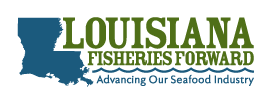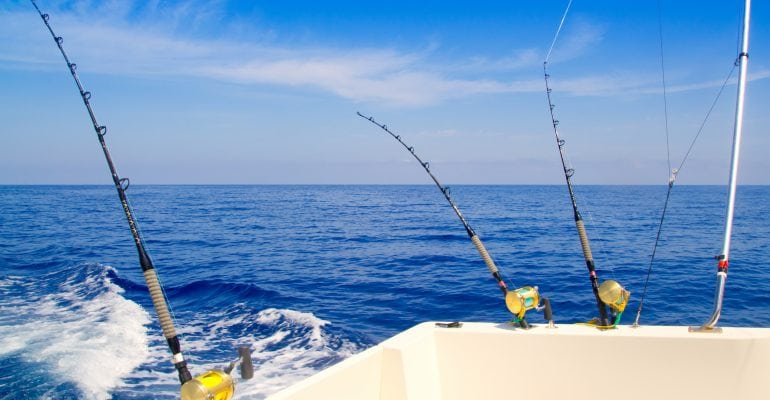The Gulf of Mexico Fishery Management Council met in Corpus Christi, Texas, August 20-23, 2018. The Council elected Dr. Tom Frazier as its Chair and Dale Diaz as its Vice Chair. The following is a brief summary of the Council’s actions:
Coral
This week, the Council took final action on a document that clarifies the intent of fishing regulations in Habitat Areas of Particular Concern managed by the Council. Specifically, the Council prohibited the deployment of prohibited gear types in habitat areas of particular concern. Meaning, prohibited gear should not be in contact with the water while in these areas. This action will be transmitted to the Secretary of Commerce for approval and implementation.
Historical Captain Endorsements
The Council reviewed an abbreviated framework action that considers converting historical for-hire captain endorsements to federal for-hire permits. There are approximately 25 such endorsements. When the for-hire permit moratorium was put in place, the endorsements were issued to licensed Captains that operated for-hire vessels but did not have a for-hire permit issued in their name. In contrast to Federal For-Hire permits, the endorsements are not transferable and require the captain to be onboard the vessel. The Council decided to add options that could modify the passenger capacity associated with the endorsement. The Council will review a revised draft and plans to take final action at its next meeting.
Cobia
The Council looked at a draft of Coastal Migratory Pelagics Framework Amendment 7, which considers modifying cobia size and possession limits. After hearing an update on landings and an analytical review from the Council’s Scientific and Statistical Committee, the Council selected a preferred alternative that would increase the minimum size limit 36 inches fork length. In addition, the Council continues to prefer decreasing the daily possession limit to one fish per person, with a two-fish vessel limit for both the commercial and recreational sectors. The Council will gather public comments on this Framework Amendment before taking final action in October.
Shrimp
Council initiated a document that will consider increasing the amount of shrimp effort allowed in the special area that is monitored for juvenile red snapper bycatch. Analysis shows that the effort reduction threshold, which requires that shrimp effort in the area monitored for juvenile red snapper be 67% below the effort in the baseline years of 2001-2003 can be reduced to 60% without affecting the rebuilding of the red snapper stock. Staff will present a draft of this amendment to the Council at a future meeting.
Spiny Lobster
After hearing a summary of public comment, the Council took final action on Spiny Lobster Amendment 13. The Council chose to align federal regulations with Florida regulations in the federal waters off the State of Florida. The changes include regulations for fishing with commercial bully nets and creates a harvest and possession limit of 250 lobsters when diving off certain Florida counties. The Council also chose to allow the State of Florida to request changes to federal spiny lobster regulations for the federal waters off Florida through the NMFS rulemaking process. Since this is a jointly managed fishery management plan, the South Atlantic Fishery Management Council will review it at its in September meeting before transmittal to the Secretary of Commerce for approval and implementation.
Red Snapper
Annual Catch Limits and Targets
The Council took final action to modify red snapper harvest limits. After the most recent red snapper stock assessment, the Council’s Scientific and Statistical Committee increased the acceptable biological catch (ABC), which allows the Council to increase annual catch limits (ACLs) and targets (ACTs). The ACLs are the quotas for each sector, but in order to reduce the possibility of quota overharvests recreational season lengths are set based on the ACT. The Council chose to increase the red snapper ACLs and ACTs using a constant catch recommendation based on 2019 – 2021 and subsequent years. In a separate framework action, the Council took final action to modify the annual catch target buffers for the recreational sector. The Council decided to set the for-hire component ACT 9% below its ACL and keep the private angling component ACT 20% below its ACL. Both documents will be submitted to the Secretary of Commerce for approval and implementation. The catch limits resulting from the combination of actions, in millions of pounds whole weight, are as follows:
| ABC | Total ACL | Comm
ACL |
Rec
ACL |
Private
ACL |
For-Hire
ACL |
Rec
ACT |
Private
ACT |
For-Hire
ACT |
|
| Current | 13.74 | 13.74 | 7.007 | 6.733 | 3.885 | 2.848 | 5.386 | 3.108 | 2.278 |
| 2019 | 15.1 | 15.1 | 7.701 | 7.399 | 4.269 | 3.130 | 5.919 | 3.415 | 2.848 |
| 2020-2021+ | 15.1 | 15.1 | 7.701 | 7.399 | 4.269 | 3.130 | 5.919 | 3.415 | 2.504 |
Re-Allocation
The Council was presented with a scoping document that considers reallocating the red snapper annual catch limit between the commercial and recreational sectors as well as between the for-hire and private angling components of the recreational sector. As part of the reallocation review process, the Council has asked staff to provide an analysis of the current objectives in the reef fish management plan, so it can evaluate the extent to which those objectives have been achieved. The Council plans to continue work on this document at its October meeting.
State Management Plans
The Council reviewed draft amendments for establishing state management programs for the recreational red snapper. The Council changed its preferred alternative and selected an alternative including the private angling component only in state management. The Council directed staff to add alternatives to provide the appropriate mechanism, such as an endorsement to the permit, for the federal for-hire component in state management. The Council plans to review public hearing drafts of the state management amendments at its October meeting before hosting public hearings across the Gulf coast.
Hogfish
The most recent hogfish stock assessment determined that the acceptable biological catch (ABC) had to be reduced for 2019-2021 and subsequent years to avoid overfishing. The Council took final action on a framework action that adjusts the hogfish annual catch limits to align them with the new acceptable biological catch levels:
| Year | ABC | ACL |
| 2019 | 129,500 | 129,500 |
| 2020 | 141,300 | 141,300 |
| 2021+ | 150,400 | 150,400 |
Hogfish harvest levels in pounds whole weight.
The Council will submit this document to the Secretary of Commerce for approval and implementation.
Modifications to Commercial Individual Fishing Quota (IFQ) Programs
The Council reviewed draft actions for Amendment 36B and made edits to the alternatives. The proposed actions include requiring shareholders to have a federal permit, distributing shares that have been reclaimed by NMFS, establishing a quota bank, and requiring weight estimates provided in landing notifications to be accurate. The Council will review an updated draft of this amendment at a subsequent meeting.





